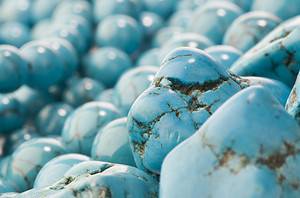Originally, any rock now classed as metamorphic, started out as a different kind of rock. They’ve just changed from an earlier form of rock, whether they were sedimentary, igneous, or even some other kind of metamorphic rock. To better understand what a metamorphic rock is, though, we need to look briefly at what metamorphism is and how it changes rocks.
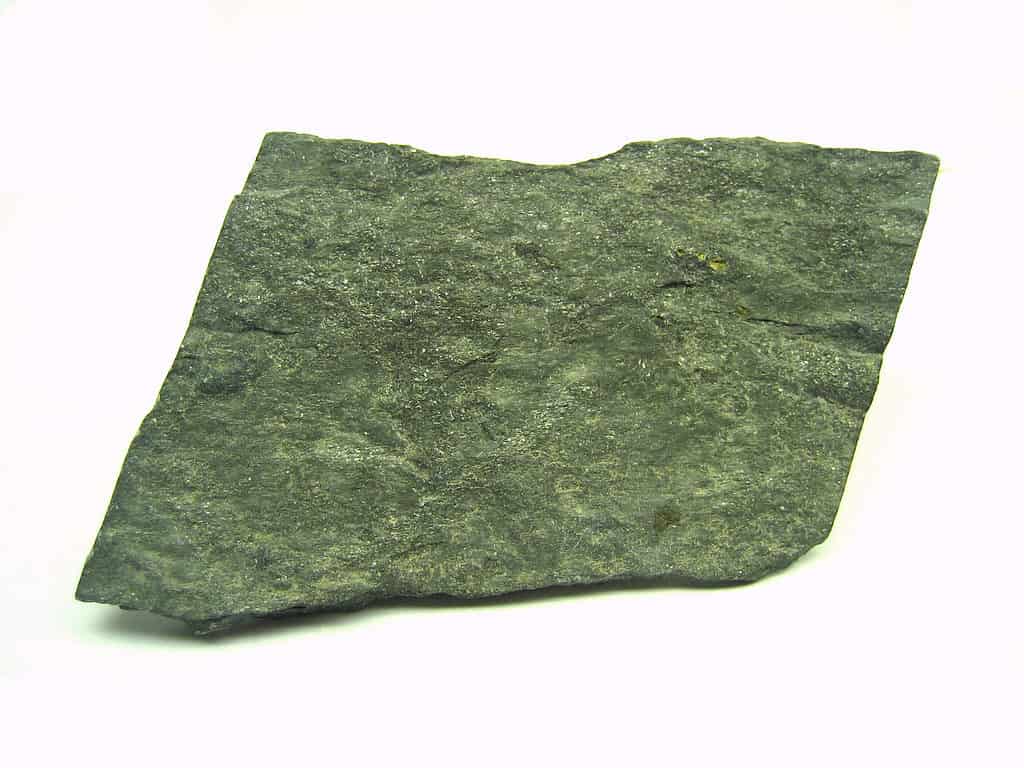
Slate is a type of metamorphic rock.
©
What is Metamorphism in Rocks?
Metamorphism is a process created by extreme heat, extreme pressure, and super-hot mineral-rich fluids. In most cases, some combination of these factors works together to change the rocks.
Metamorphism is not a process that melts rocks. It actually transforms one type of rock into a denser type of more compact rock. Minerals metamorphosize into new minerals by rearranging the components within. Or some kind of reaction occurs to the fluids that enter the rocks and therefore change them.
Types of Metamorphism
There are several types of metamorphosis in rocks, based on a variety of factors, as mentioned above, often in unique combination that creates just the right circumstances to form the types of metamorphic reaction.
Regional Metamorphism

Rocky mountains are made up of metamorphic rocks.
©Steve Boice/Shutterstock.com
Large areas of rock have been subjected to the factors of metamorphism, usually over long intervals of time and usually in relation to the creation of mountains. This occurs at the subduction zones when continental collisions occur as two plates converge.
This type of metamorphism forms most of the foliated metamorphic rocks, including slate, phyllite, schist, and gneiss.
Contact Metamorphism
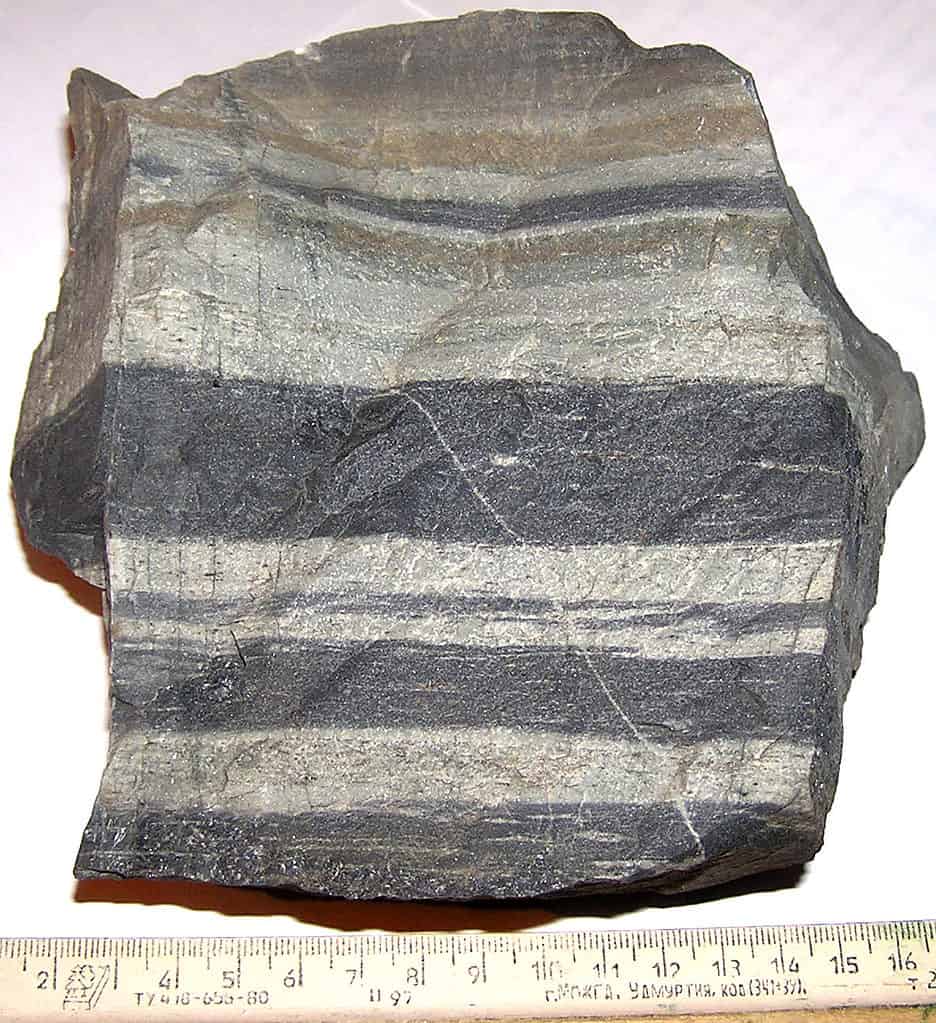
Clear bands are visible in hornfels.
©
The heat of nearby magma combined with solid rock and igneous intrusion creates contact metamorphism. This basically means that it’s not pressure but rather contact with hot magma and extreme temperatures that create metamorphic changes. The rocks closest to the intrusion (igneous rock that forms by the crystallization of magma cooling below the earth’s surface) are heated and metamorphosized into new rocks. Sometimes, this form of metamorphism is referred to as high-temperature, low-pressure metamorphism. Hornfels is commonly the result of this kind of metamorphosis.
Hydrothermal Metamorphism
‘Hydro’ means water, and ‘thermal’ refers to heat. This type of metamorphism occurs when rocks interact extensively with super-hot fluids for a period. Often, these heated fluids are the result of nearby hot magma. The heat causes chemical reactions in the rocks, which is why the rocks change.
Burial Metamorphism
This form of metamorphism should be reasonably clear by the name. It occurs when rocks are buried beneath sediments deep enough to create the stress of pressure at the lithostatic level. In other words, the rocks are buried deeply enough that there’s so much pressure on them that they change.
Subduction Zone Metamorphism
This kind of metamorphism occurs deep in the earth ad subduction levels (tectonic plates level). Subduction takes rocks deep into the earth relatively quickly, putting immense pressure on the rocks and metamorphosizing them. This is known as high-pressure, low-temperature metamorphism.
Characteristics of Metamorphic Rock
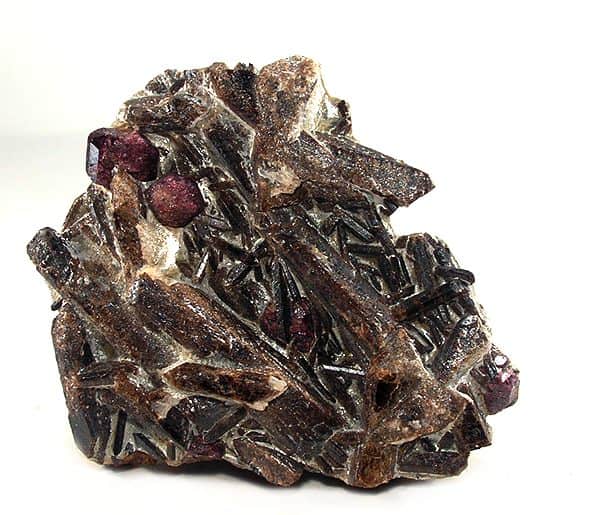
Metamorphic rock containing staurolite and almandine garnet
©
The word metamorphosis comes from ancient Greek words, meta, meaning “change” and morph, meaning “form,” so the word literally means “change form.” Throughout metamorphism, the rock remains solid (igneous rocks are those that melt during change or formation). Fluids are often present during metamorphism, filling in microscopic spaces in the rocks that are changing.
Metamorphic rocks provide geologists with an insight into the happenings deep within the earth, as they bear the evidence or record of the changes they undergo.
Metamorphic rocks are crystalline and often have a foliated or banded texture that seems squished. Think of slate, for example. It is made of fine-grained interlocking crystals that have created flat rocks. Schist, on the other hand, is evidence of the crystal formation, evidenced through the shiny mica (a mineral) infused into the rock. The crystals line up in the rock, making it appear a bit wrinkly and shiny at once (flecks of mica). This is a foliated rock. Some have banded textures, that look like literal color bands embedded in the rocks, like those found in gneiss. This appearance of bands is the semi-interlocking of crystals forming those flat “squashed” foliation.
Basically, it could be said that metamorphic rocks may have 5 characteristics, depending on how they are formed.
- Shimmer/shine
- Reflective dots (tiny flecks of minerals)
- Bands of colors or shades
- Organized patterns
- Grain-like appearance
How to Identify Metamorphic Rock
There are several things you can do to identify metamorphic rock, despite there being different types.
Look for Shimmer and Shine
Not all metamorphic rock will have shimmer and shine (non-foliated rocks don’t), but if you hold up the rock to light and see shininess on the rock, you have a foliated metamorphic rock on hand.
Look for Patches of Reflective Dots
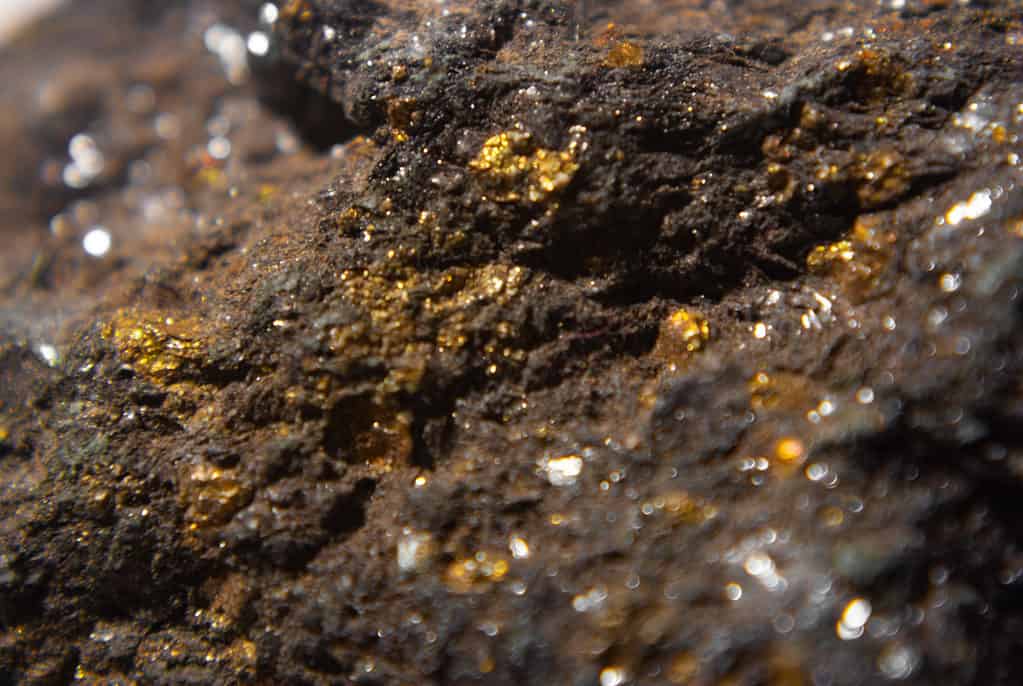
The small flecks are created by crystals in the rocks.
©iStock.com/Dominic Fial
Tiny, reflective dots and spots in a rock usually indicate you’ve got a metamorphic rock. These are those spiny specs of minerals like mica that sparkle and glimmer in light. If you can’t see the tiny spots, a magnifier may reveal them.
Look for Stripes or Bands of Colors and Shades
When stripes or bands, even narrow ones, appear, looking like ribbons or veins in the rock, you more likely than not have a metamorphic rock. These are different than sedimentary rock, though, which have layers that look a bit like stacked pieces and have distinctive textures. Metamorphic rocks with bands feel like one rock, rather than several rocks squashed together.
Look for Grainy Textures and Organized Patterns
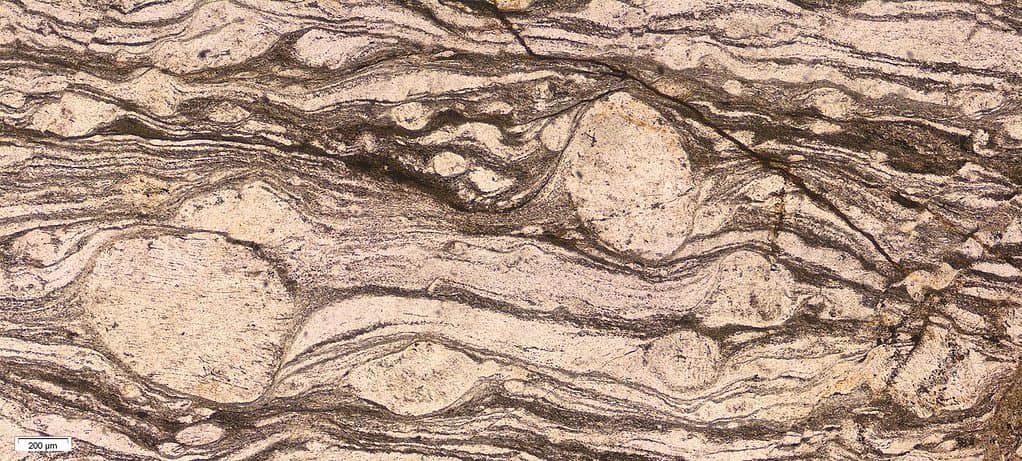
The grainy appearance is quite clear in this Mylonite.
©
Most metamorphic rocks have a grainy appearance as well, save for slate and some rare metamorphic rocks. These don’t usually reflect the way crystalline rocks do, but the grains are distinctive, with obvious bands and stripes. These patterns and grains are a strong indicator that you’re probably dealing with metamorphic rock.
Metamorphic Rock FAQs
Still have some questions about metamorphic rocks? We do have some articles that dig deeper into types, formation, and others, but these FAQs may help answer some basic questions you have.
What kinds of rocks can be metamorphic?
Interestingly enough, any type of rock can become a metamorphic rock. This means igneous rocks, which are formed by “melting” and sedimentary rocks can be metamorphic. Existing metamorphic rocks can also be metamorphosized again, as well. It all depends on the various conditions the rocks encounter which determine if they remain as is, melt into igneous rock, or morph into a new kind of rock altogether.
What are the most common types of metamorphic rocks?
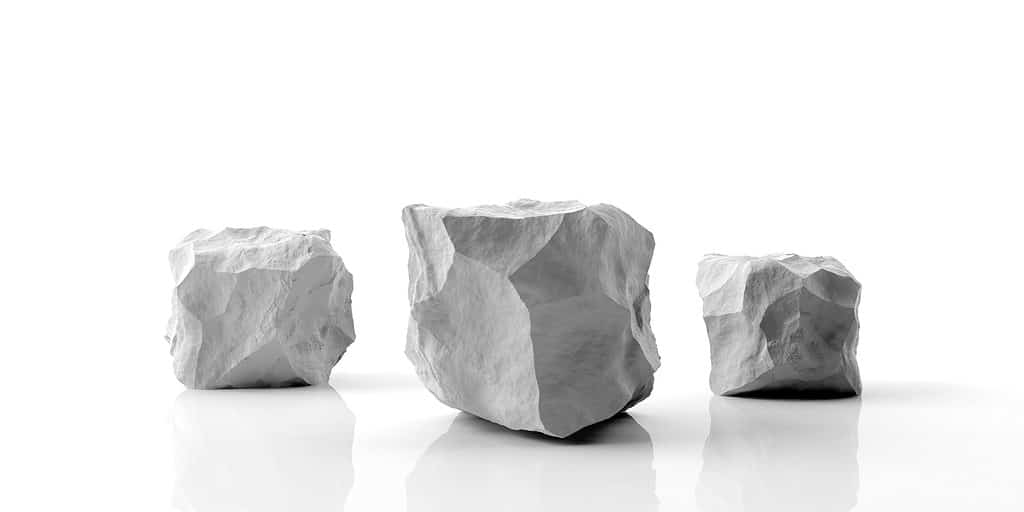
There are many types of marble that are used in construction frequently.
©iStock.com/Rawf8
There are many, many common metamorphic rocks that we interact with and have become familiar with because of their use in architecture, home improvement, and other structures, as well as commonly seen in nature.
Some of the most common ones include:
- Marble
- Slate
- Phyllite
- Gneiss
- Schist
- Quartzite
- Skarn
- Hornfels
- Novaculite
- Argillite
Are there different kinds of metamorphic rocks?
There are two primary types of metamorphic rocks: foliated and non-foliated.
Foliated metamorphic rocks are strongly banded types of metamorphic rocks. These are created by pressure squeezing the rock’s minerals flat, and thus, the bands of color seen in the rocks. They have a platy or sheet-like structure to them.
Non-foliated metamorphic rocks don’t have that sheet-like structure, but rather are formed through other conditions, like heat and fluids, which change the rock without flattening them. These are the rocks that have chemical changes occur in them, which therefore change their structure and appearance.
The photo featured at the top of this post is ©
Thank you for reading! Have some feedback for us? Contact the AZ Animals editorial team.




